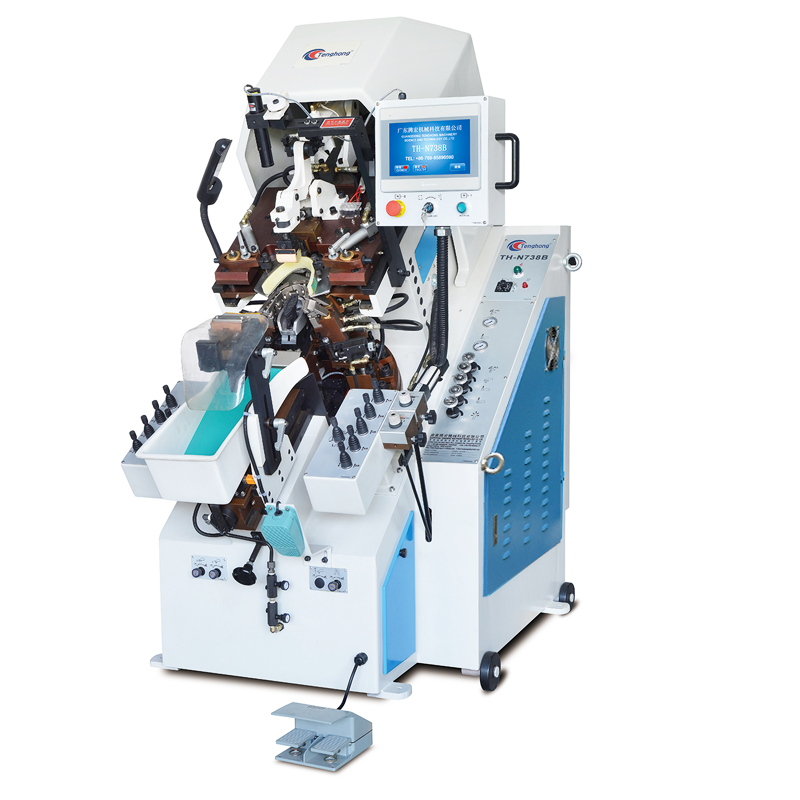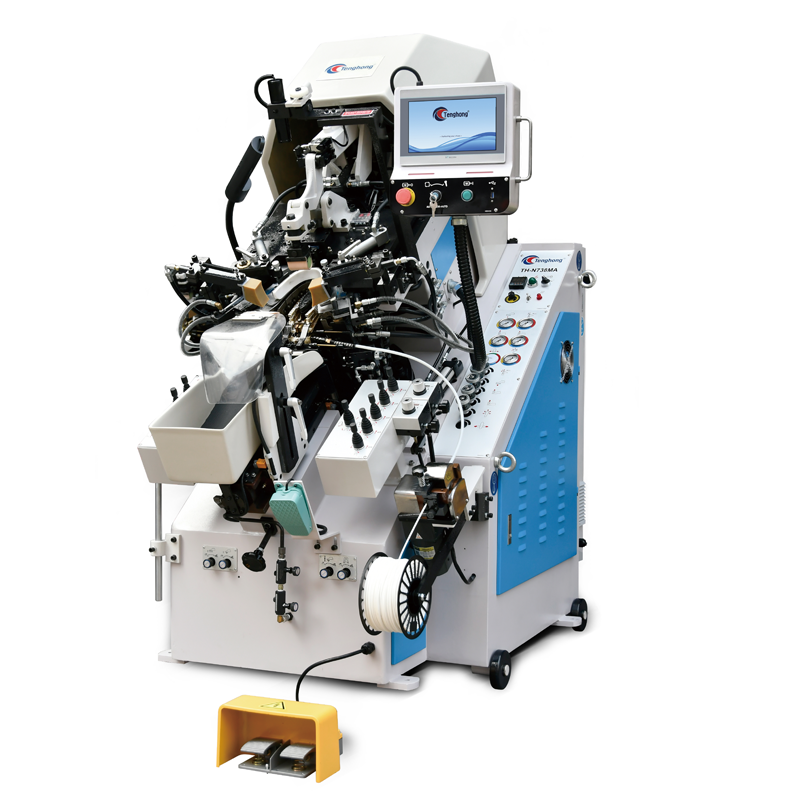Exploring Cost-Effective Toe Lasting Machines for Shoemaking
Key Features of Cost-Effective Toe Lasting Machines
Precision Engineering for Consistent Results
Toe lasting machines today represent some serious engineering work, delivering pretty much spot-on results for every stitch and part assembled into shoes. The way these machines are built really cuts down on mistakes something manufacturers care deeply about when it comes to keeping their product standards high. Most top tier shoe machine brands put together their high precision models using solid grade materials. These better materials do two things at once they improve how accurately the lasting happens and they make the machines last longer too. And let's face it nobody wants shoes that don't fit right after all that effort. According to what various industry reports indicate, factories using machines with those precise parts see rejection rates drop significantly. That means fewer wasted resources and better bottom lines across the board in shoe manufacturing operations.
Adjustable Speed Settings for Material Versatility
Toe lasting machines that won't break the bank come equipped with adjustable speeds, giving them a real edge when working with different materials. The speed controls let operators tweak how fast the machine works depending on what they're dealing with in the shop leather, synthetics, maybe even some specialty fabrics. What this means is better results across the board no matter what goes through the press. Manufacturers find these variable speed features particularly useful because they can switch between mass production batches and smaller custom jobs without missing a beat. Production lines run smoother overall since the machines adjust so easily to whatever comes next on the conveyor belt.
Automated Cementing Capabilities
Adding automated cementing features to toe lasting machines makes the shoe manufacturing process much faster since it cuts down on hands-on work required from workers, which speeds things up considerably. The machines come with precise applicators that spread glue evenly across surfaces, something that matters a lot when making shoes that last through regular wear and tear. Industry insiders point out that bringing automation into cementing operations saves money on labor while still letting factories produce more pairs each day without sacrificing build quality. These automatic cementing units mark a big step forward for shoe factory automation, showing how manufacturers are moving away from traditional methods toward smarter ways of getting products made efficiently.
Benefits of Modern Automation in Footwear Machines
Reducing Labor Costs Through Smart Technology
Bringing in automated footwear manufacturing equipment cuts down on labor expenses quite a bit. We're talking about machines that need far fewer workers running them compared to traditional setups, which makes production run smoother overall. When factories optimize their workflow patterns and cut down those costly mistakes humans tend to make, they free up staff members for jobs where human touch really matters, like product design work or making sure quality standards are met across batches. Industry reports from last year show most manufacturers see good money back from these investments within three to five years after installation. Take the case of automated shoe cementing systems specifically – many small brands have reported cutting waste materials by around 30% while keeping output levels steady. This kind of tech adoption isn't just about saving cash though; it actually helps smaller players compete against bigger rivals who already had these advantages built into their operations.
Improving Production Consistency in Shoemaking
Machines that automate production offer manufacturers a solid way to keep quality consistent throughout their entire line of shoes. These systems repeat manufacturing steps exactly the same way each time, so no two pairs end up different from what was intended. The latest models come equipped with smart sensors too, which constantly check on things during production and tweak settings when something looks off track before any real problems happen. According to recent market analysis, brands that maintain this kind of consistency tend to see happier customers who stick around longer. When companies invest in these precise footwear manufacturing solutions, they build stronger reputations because consumers worldwide get exactly what they expect from product to product.
Energy Efficiency in Automated Shoe Cementing
Modern automated shoe cementing machines really stand out when it comes to saving energy. These newer versions consume way less electricity than their predecessors from just a few years back, and this difference actually cuts down on running costs for manufacturers. The design of these machines focuses heavily on cutting waste materials and lowering carbon emissions, something that fits right into what many countries are pushing for in terms of green manufacturing. Real world data shows that businesses switching to these efficient systems see double benefits environmental protection while also keeping their bottom line healthier. Footwear companies especially appreciate how these machines help them meet strict eco regulations without breaking the bank, so sustainability has become much more than just good PR it's now a core component of how these businesses plan for long term success.
Top Cost-Effective Models for Shoemaking Operations
TH-N738A 9-Pincer Computer Memory Control Machine
The TH-N738A stands out because of those nine pincers that really take the lasting process to another level. With such precise control over multiple points at once, manufacturers can create better fitting shoes across different models. What makes this machine special is how it handles computer memory controls. These aren't just fancy buttons but actual smart systems that remember settings for each shoe style, so operators don't waste time adjusting everything manually between batches. Factory workers who've switched to these machines tell us they're seeing around 30% faster production times compared to older equipment. That kind of boost matters a lot in industries where every minute counts during peak seasons.
TH-N738B 7-Pincer High-Speed Replacement System
The TH-N738B was built with speed and efficiency in mind, sporting a unique seven-pincer configuration that works great for companies looking to boost their output. What really stands out is the fast replacement system which cuts down on adjustment time, so there's less waiting around when changing production runs. People who've actually used this machine report being able to switch back and forth between different shoe designs without much hassle at all. This kind of flexibility makes a big difference in factories where things are constantly changing and adapting to new orders becomes part of daily operations.
TH-N738MA Automatic Cementing Model with Memory Storage
The TH-N738MA really shines when it comes to automating the cementing process thanks to its internal memory storage system that lets operators quickly access saved settings and workflow sequences. What this means is much shorter setup times and greater flexibility when dealing with special order requests without having to spend hours on end reprogramming everything. According to feedback we've received from actual users across the industry, many businesses have seen their sales of custom shoes go up substantially since switching to this particular model. The machine just works so well at maintaining both accuracy and speed during production runs, which makes all the difference in meeting customer demands these days.
Factors to Consider When Choosing Shoe Lasting Equipment
Production Volume vs Machine Capacity
Picking the right shoe lasting equipment starts with looking at how much stuff gets made versus what the machine can actually handle. If the gear isn't up to speed with daily output requirements, it creates all sorts of problems down the line. Mismatched capacities mean waiting around for machines to catch up, which eats into profits and slows things down across the board. According to shop floor data from various manufacturers, getting those numbers aligned makes a world of difference. Shoemakers who match their machinery capabilities with actual production demands see faster turnaround times and save money in the long run. Proper sizing of equipment ensures materials aren't sitting idle while workers wait for machines to finish cycles, ultimately giving businesses better control over their bottom line without breaking the bank on unnecessary upgrades.
Integration with Existing Shoe Stitching Systems
When bringing in new lasting equipment, it needs to fit right in with the current shoe stitching systems so everything runs smoothly on the production floor. Getting these systems to work together cuts down on those extra costs during transitions and means workers who already know how things operate won't need weeks of training again. We've all seen what happens when companies rush into new tech without checking compatibility first industry insiders talk about months lost to fixes and budgets blowing out of control because nothing actually works together. The bottom line? New machines must play nice with old ones like traditional shoe sewing units or other stitching equipment already in place. This kind of harmony keeps production lines running at full speed without constant stoppages that frustrate everyone from factory managers to frontline staff.
Maintenance Requirements for Long-Term Value
Looking at what kind of maintenance these shoe lasting machines need is really important when figuring out their worth over time. When we keep up with regular maintenance work, the machines perform consistently, last longer, and stop those expensive breakdowns from happening. Getting machines that come with good service support makes sense for most businesses because it cuts down on downtime and keeps production running smoothly. People who know about this stuff say knowing exactly what maintenance each specific shoe machine requires helps extend its life, which means better money back when selling used equipment later on. Machines that are easy to maintain generally lead to healthier bottom lines and fewer headaches down the road for any footwear manufacturing operation.




